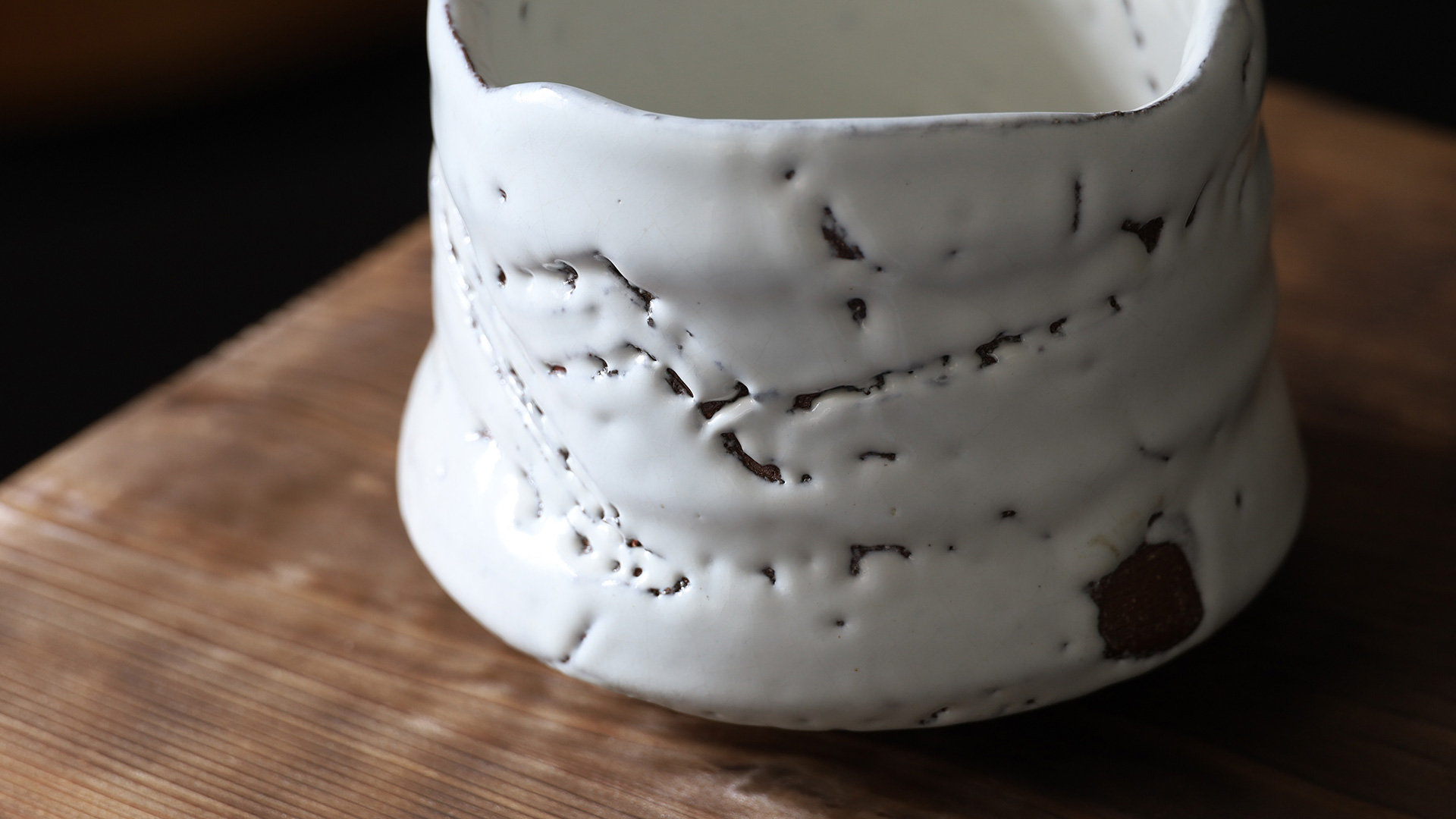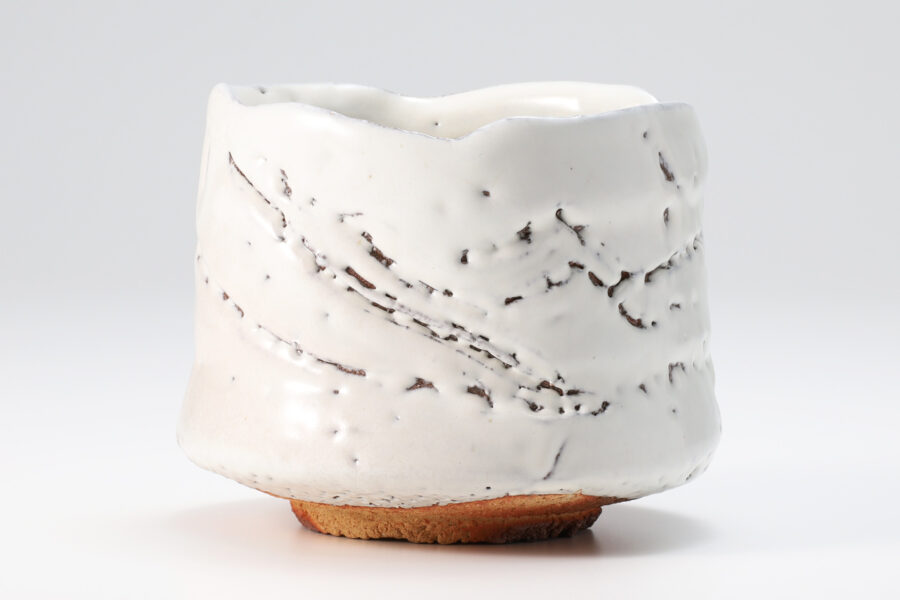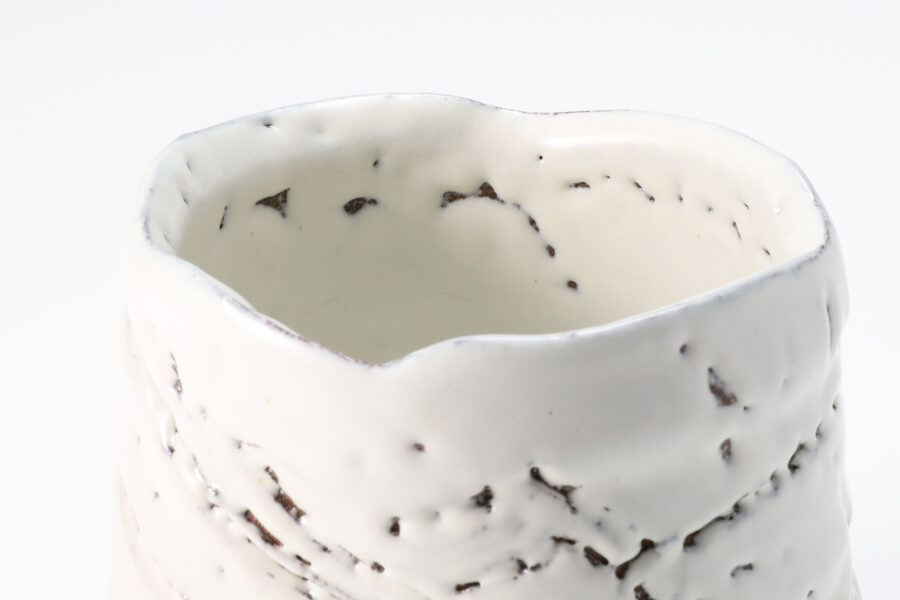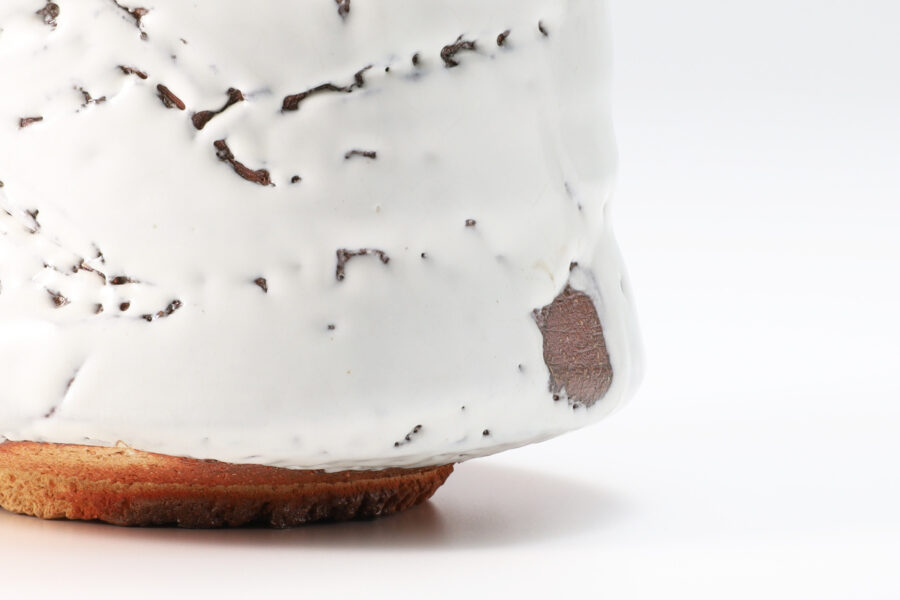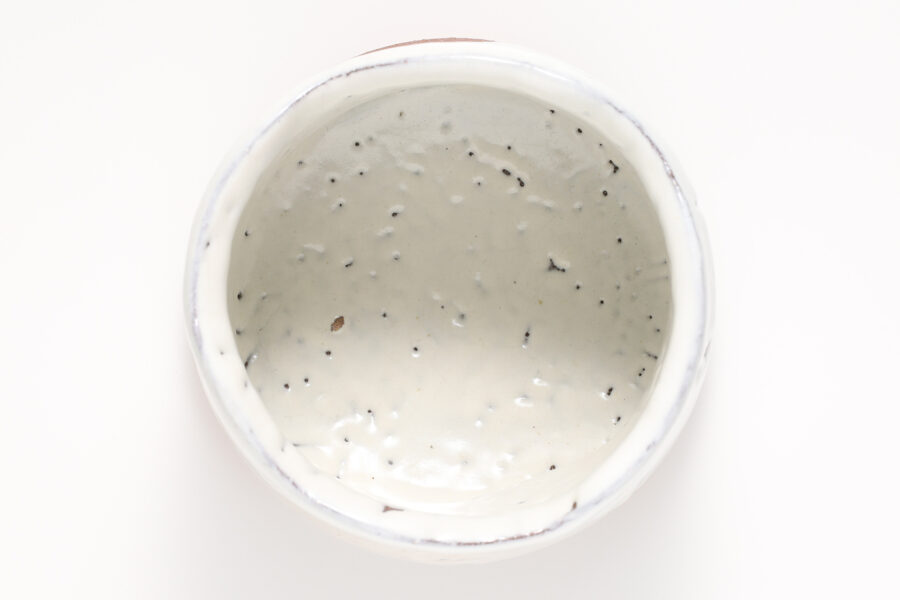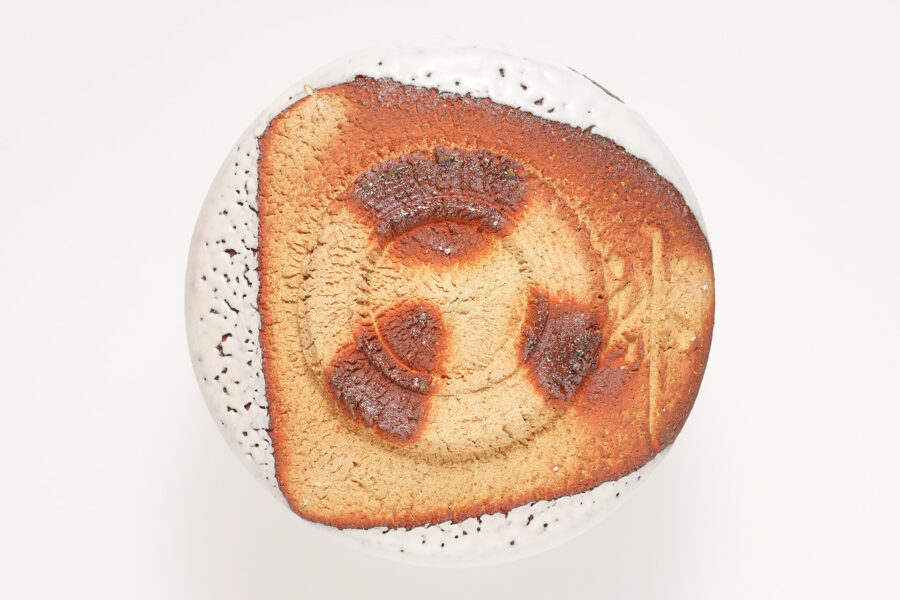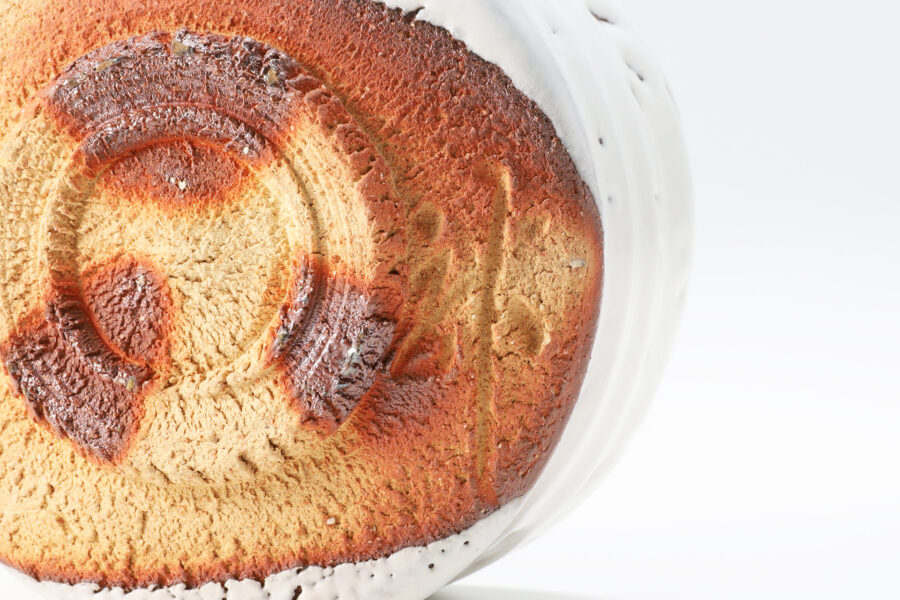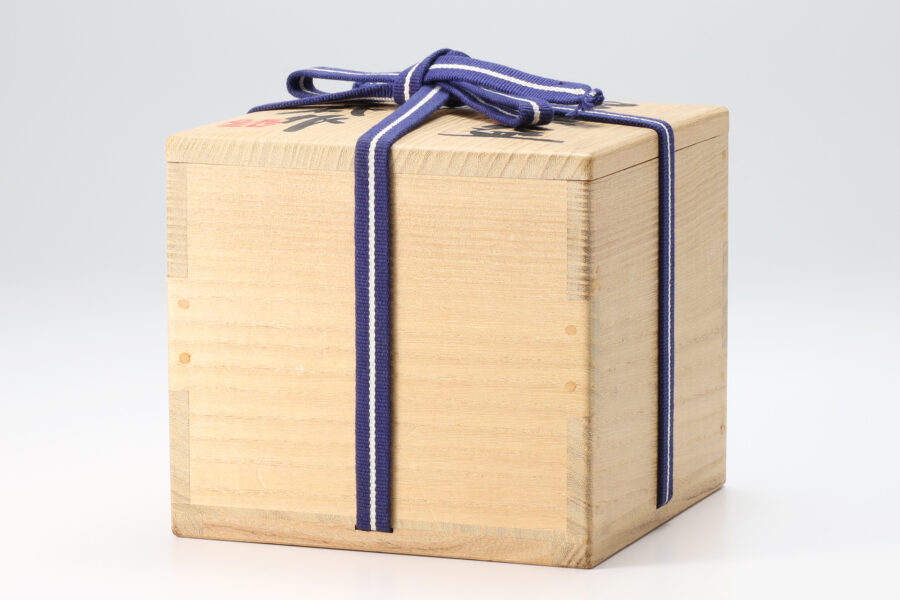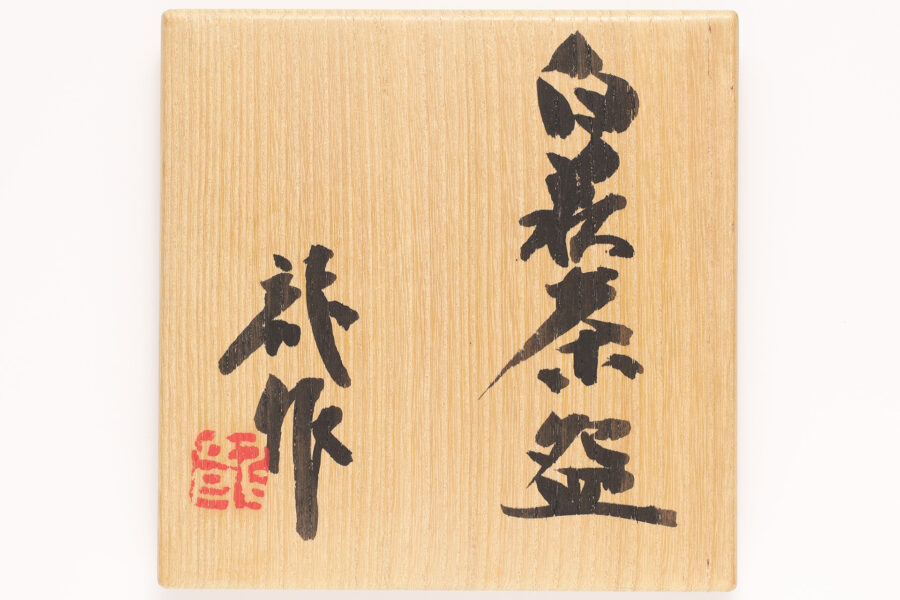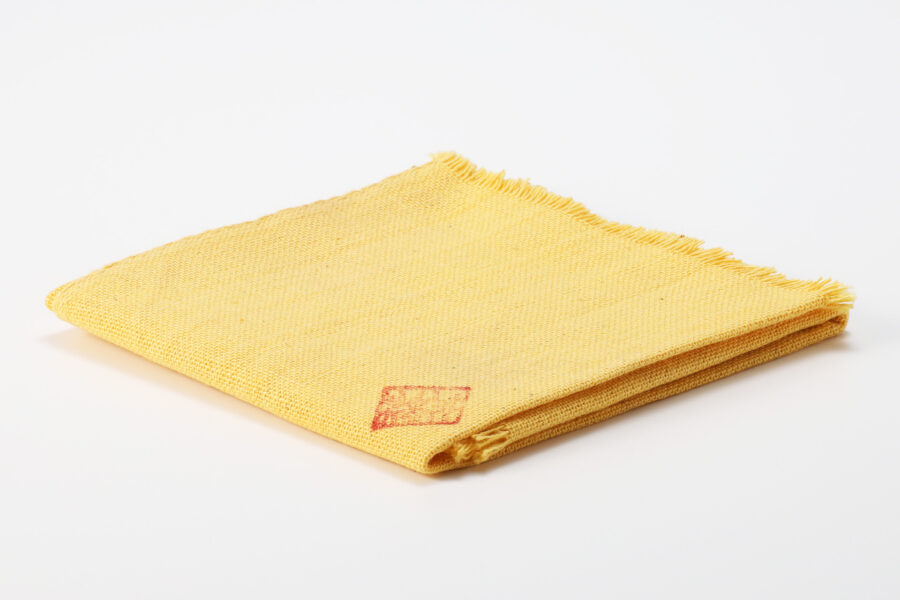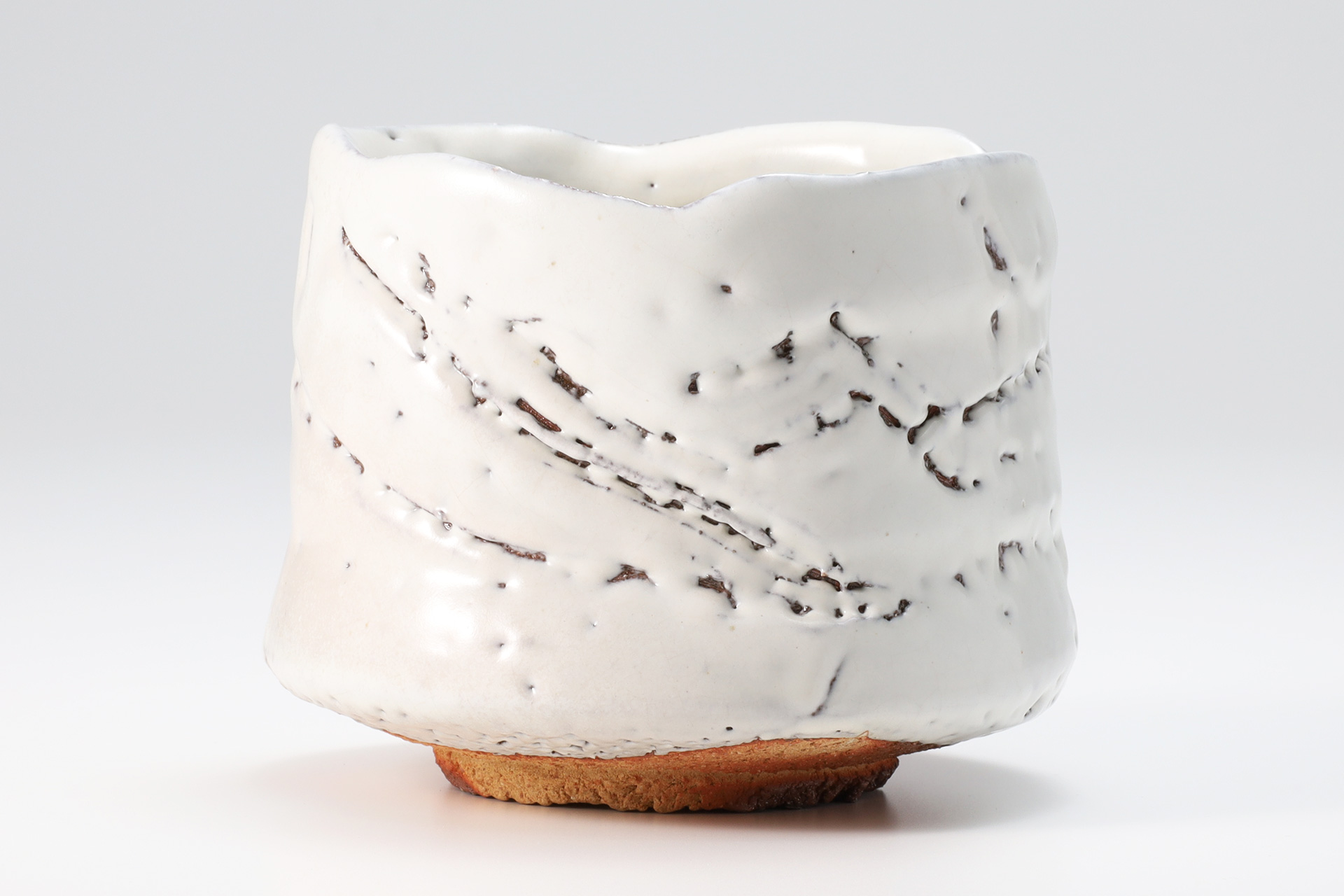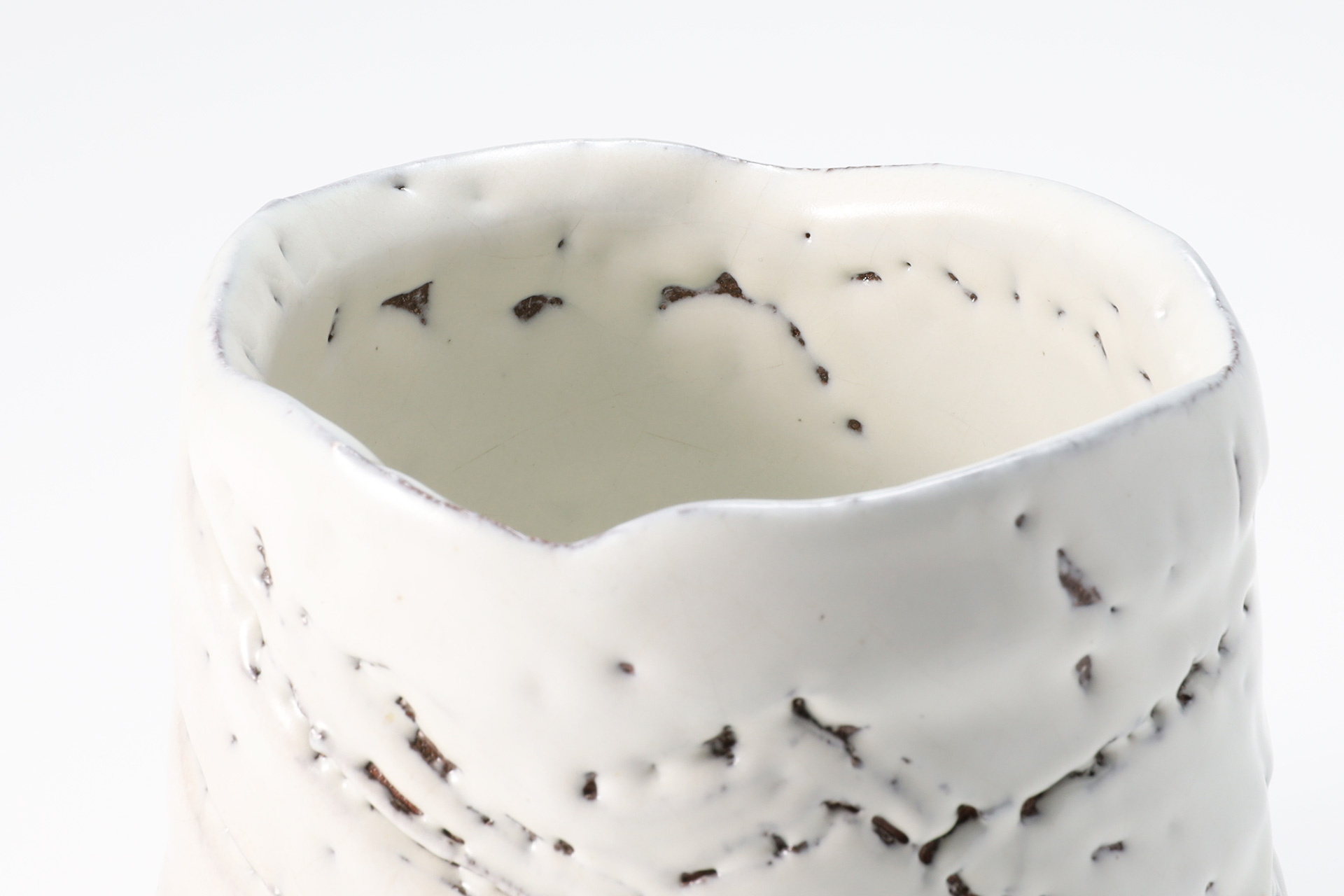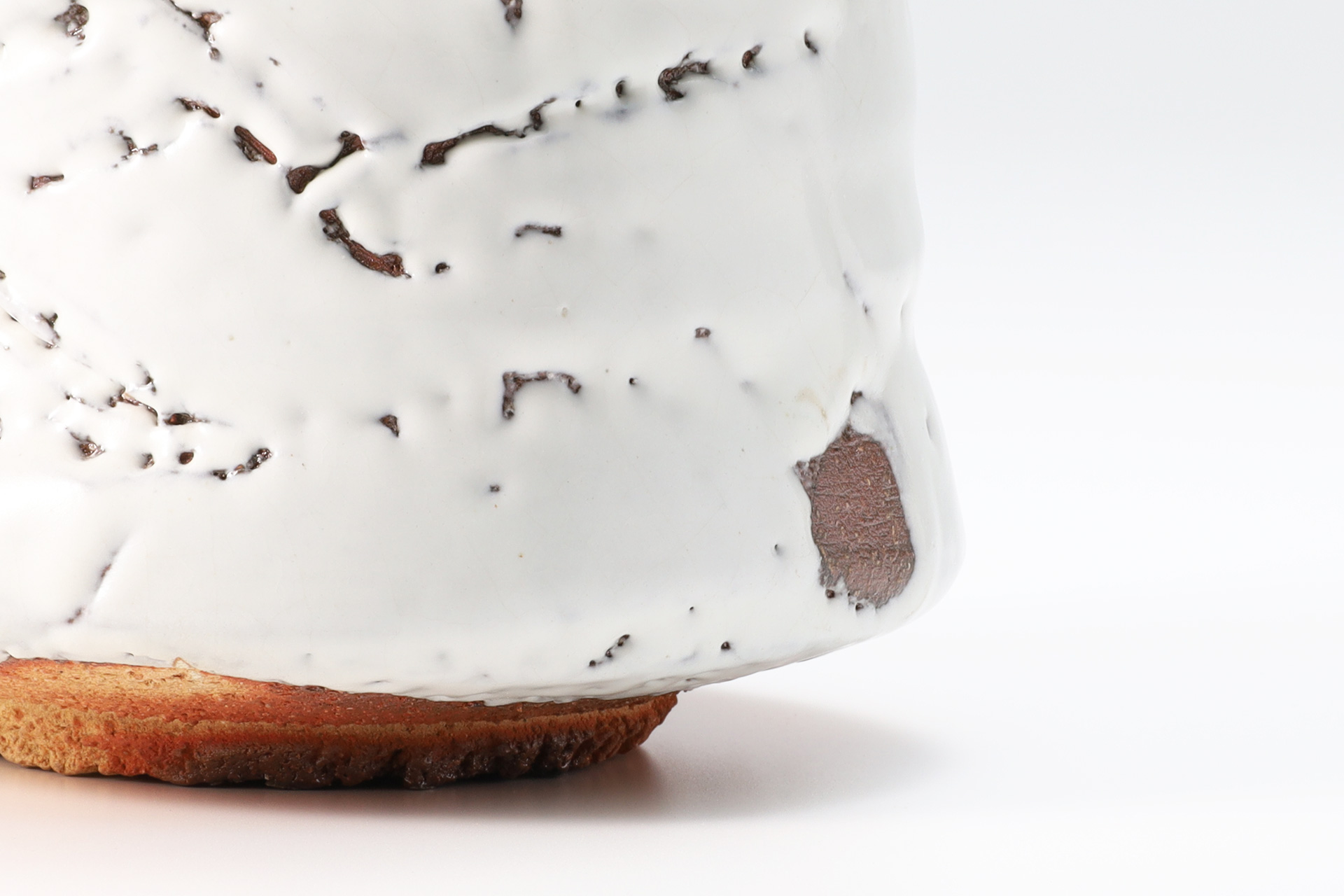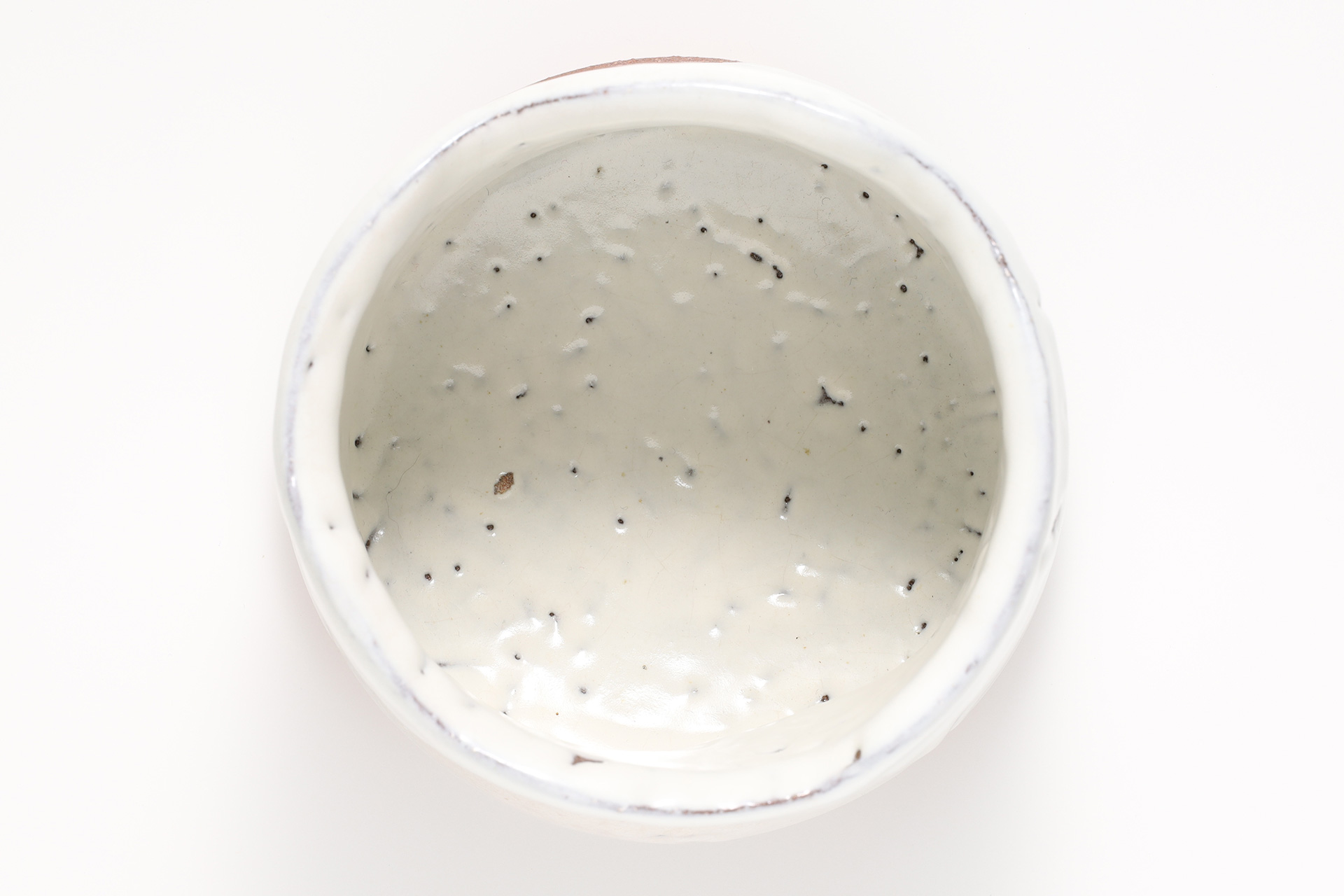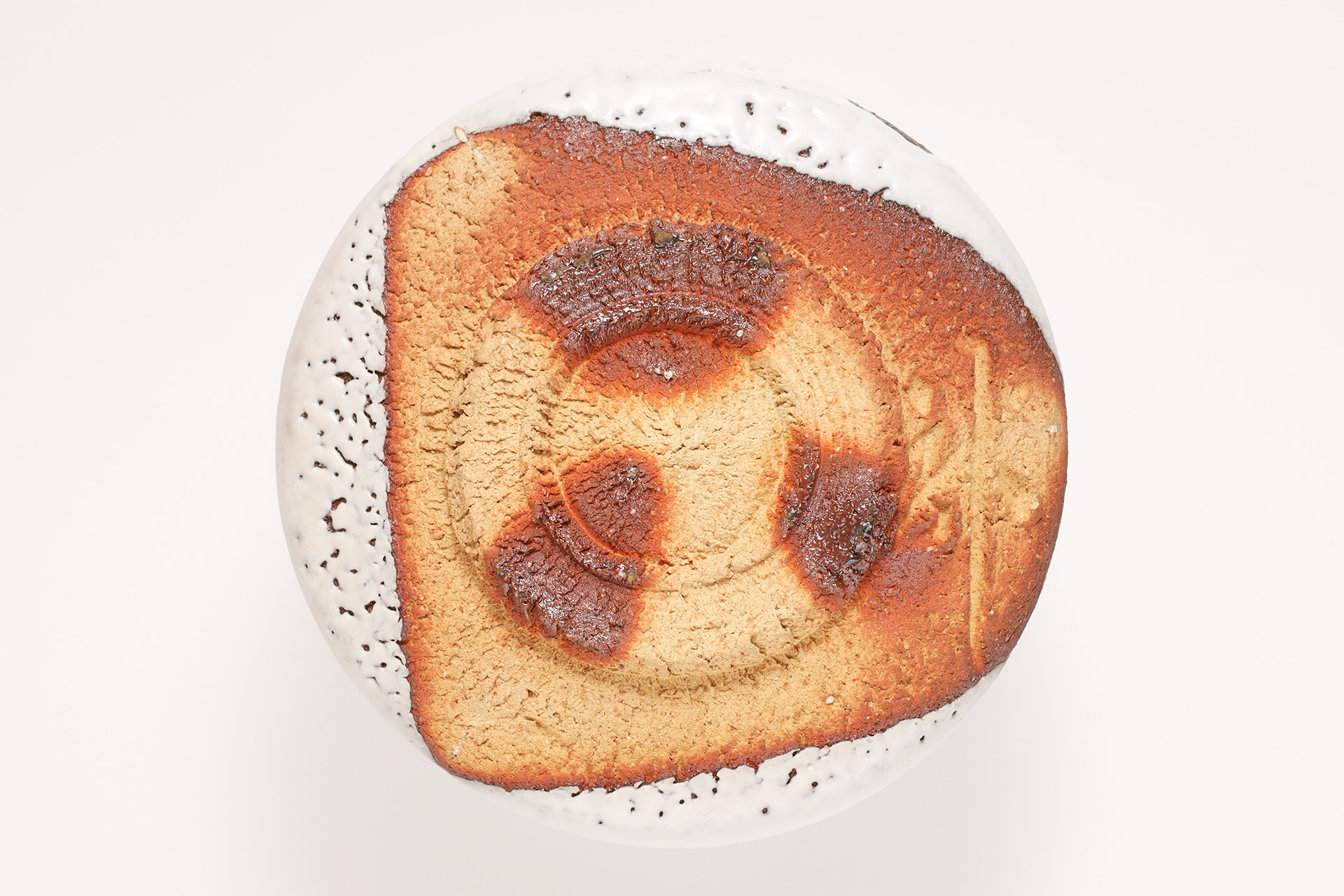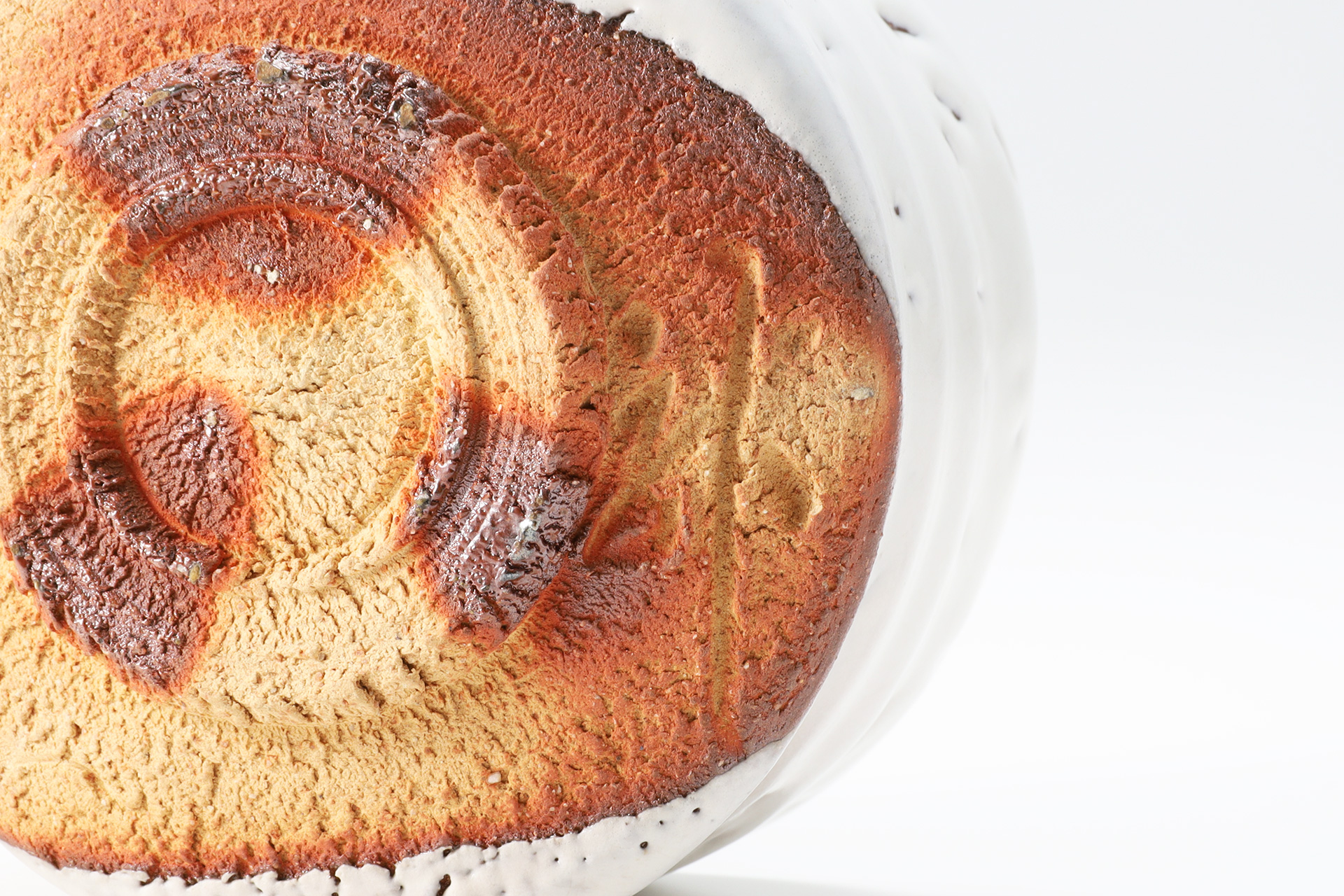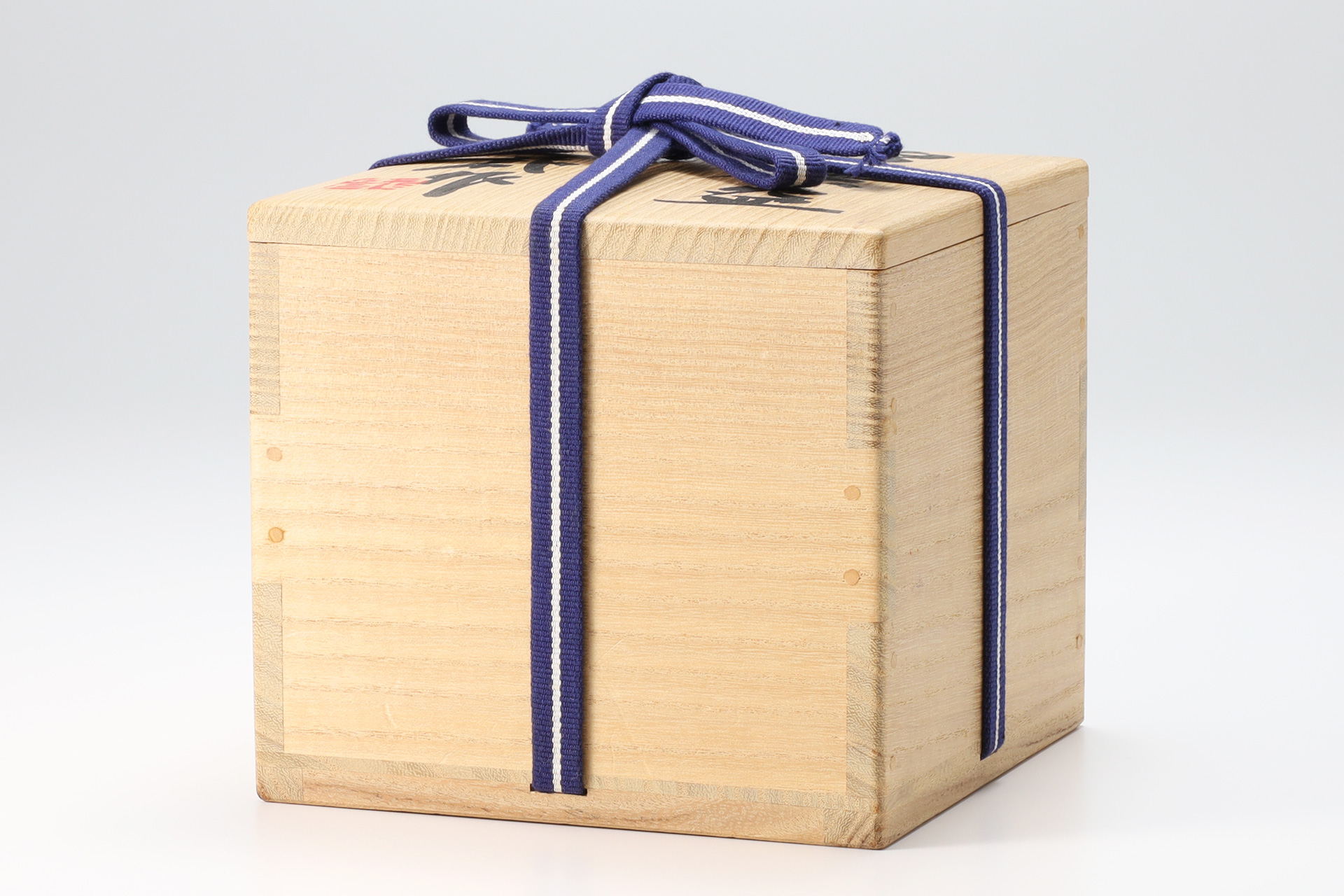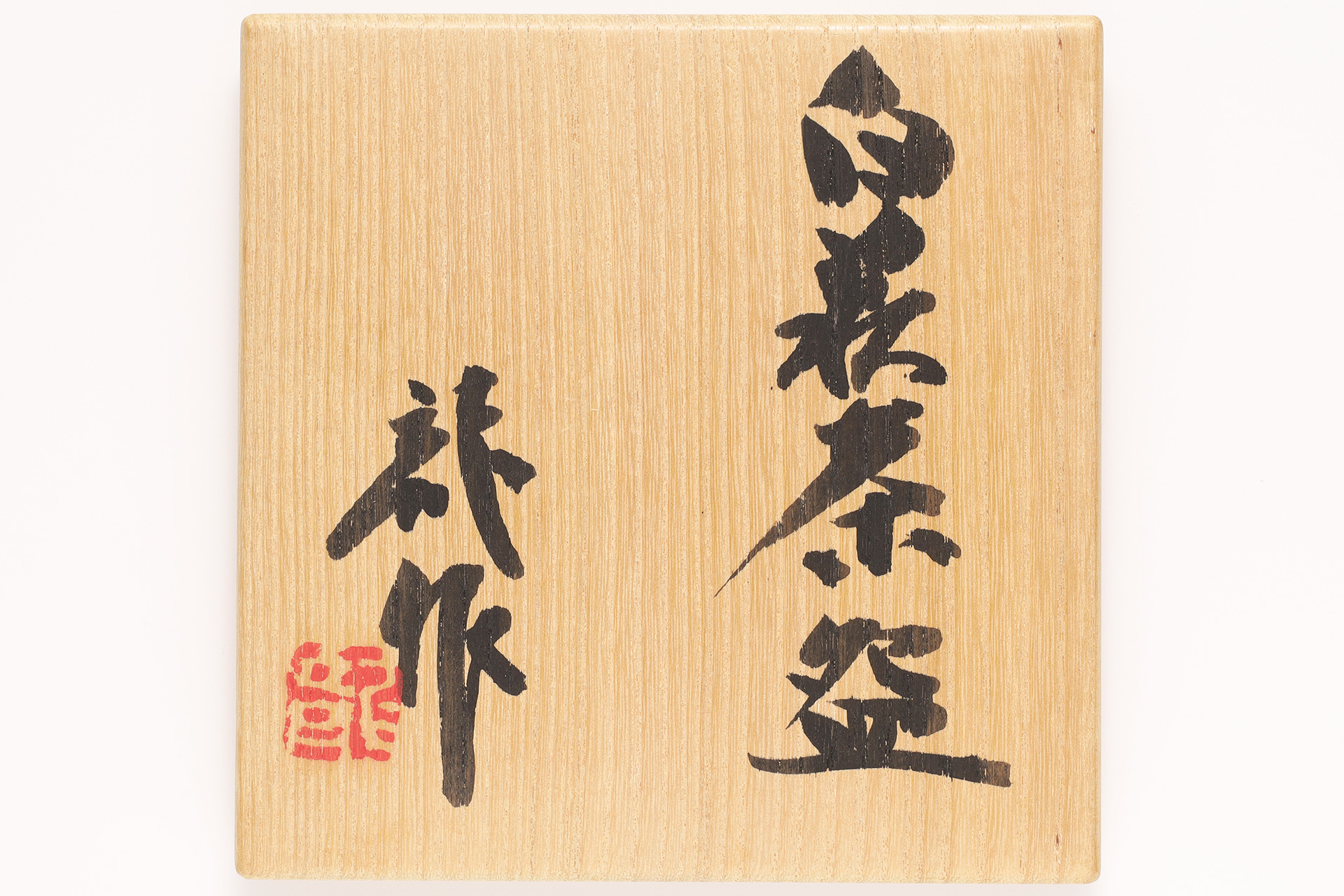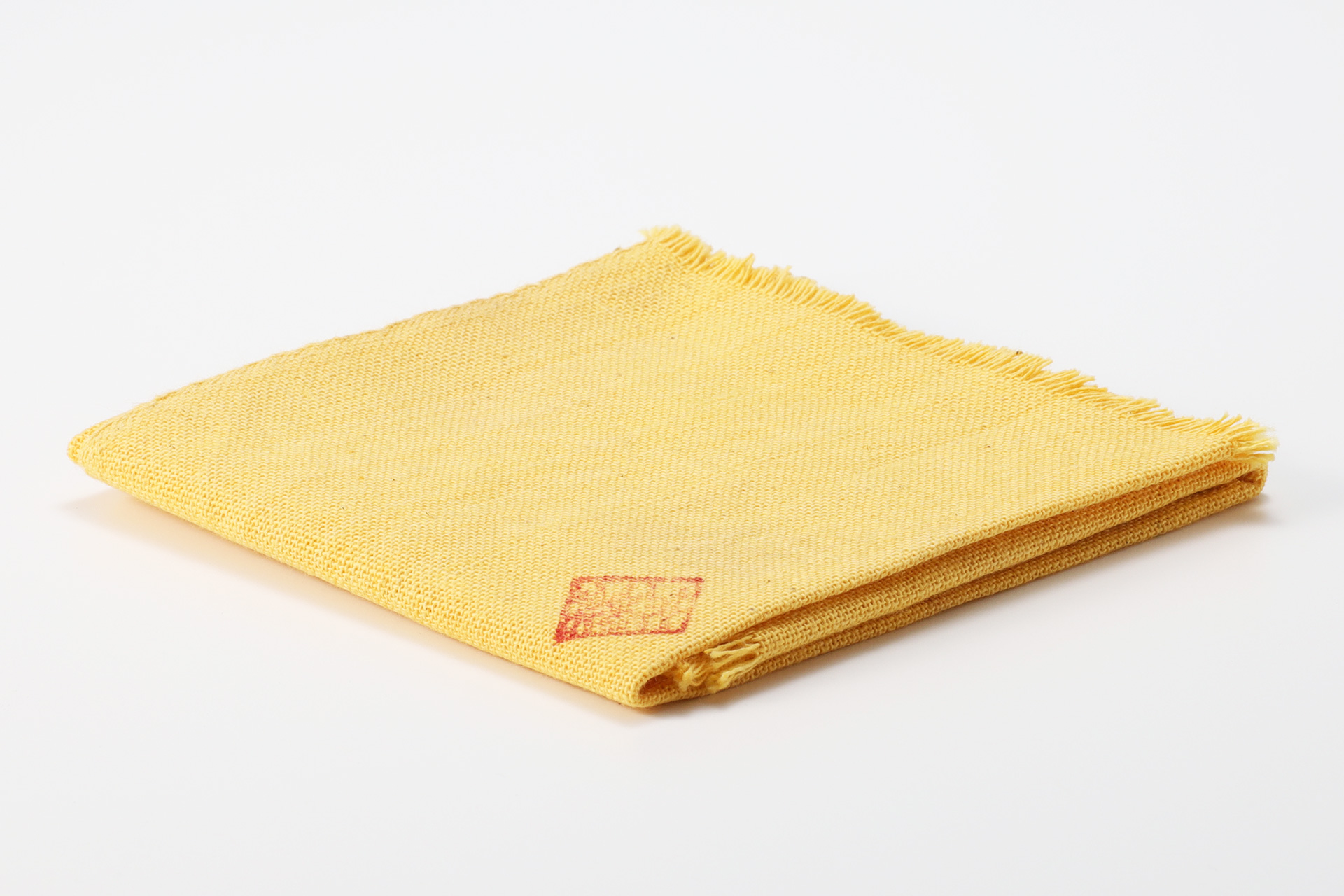This white hagi tea bowl is considered the excellent work of Ryosaku's philosophy, which combines tradition and modernity. The carvings carved in one breath after molding and the generous amount of snow white glaze(Kyusetsu White)create a highlight. By making full use of his unwavering spirit and natural creative ability to break through the preconceived notions of pottery, he has been releasing a series of vivid and exciting works.
Inquiry
- Product Code
- 240505-13
- Artist
- Ryosaku Miwa
1940-
- Weight
- 614g
- Diameter
- 12.5cm
- Height
- 10.0cm
- Bottom Diameter
- 7.0cm
- Description
- Paulonia Box with Artist's Sign
Cloth with Artist's Sign
- Condition
- Excellent Condition
It is in good condition and unused.
12th Kyusetsu Miwa(Ryukisho) 1940-
12th Kyusetsu Miwa was born in yamaguchi prefecture as the eldest son of 11th Kyusetsu Miwa.
Real name is Ryosaku, alias Kyusetsu and Ryukisho.
In 1959, wanted to be a painter and started making paintings.
Drawn to the paintings of Edvard Munch and the literature of Junichiro Tanizaki and Osamu Dazai.
In 1967, after graduating from Tokyo University of the Arts, made the first work, “Hanako’s Elegant Life(High Heels)” as his graduation project.
In 1974, opened the kiln in hagi city, yamaguchi prefecture.
Received the Yamaguchi Prefecture Art Culture Promotion Encouragement Award.
In 1977, became the Professor of the Hagi Women’s Junior College.
Received the Gold Medal at the Faenza International Ceramic Exhibition.
In 1979, became the Member of the International Ceramic Academy.
Around this time, began to break away from objects that used primary color glazes such as red and blue in the early days.
Around 1980, started making tea pottery.
In 1981, exhibited tea pottery at solo exhibition, “Hatsuzaki Exhibition”, suggesting a return to tradition, but the following year, made a complete turn and presented objects that were on a new frontier at solo exhibition, “Black Landscape Exhibition”.
After that, continued to made the works based on the contrast between white glaze and the black color of mishima soil, but in 1988, made the huge work at solo exhibition “New Love Juice Exhibition”, and in the same year made the gold colored work at solo exhibition “Himiko Exhibition”. The himiko was made into the series called “Mont Himiko” and “Calligraphies de Himiko”, and from this series onwards, the size of the works became noticeably larger.
In 1989, received the Japan Ceramics Society Award.
In 1992, put an end to this series with the publication of “Calligraphies de Himiko” in black pottery, and soon announced “Black Pottery Color”, a technique that added color to black pottery.
In 1993, established the Hagi Ceramic Association, became the Chairman.
In 1994, received the Yamaguchi Prefecture Award.
In 1999, received the Chugoku Culture Award.
In 2000, to celebrate 60th birthday, released the white glaze tea pottery named “Ryuki Tea Bowl”.
In 2003, succeeded to the 12th Kyusetsu Miwa.
In 2007, the large scale retrospective exhibition was held at the shandong provincial museum to mark the 25th anniversary of the friendship relationship between shandong province, china and yamaguchi prefecture, japan.
In 2019, transfered the headship of the family to younger brother Kazuhiko and named himself “Ryukisho”.
He has created a series of vivid and exciting works by making full use of his strong ideas and natural creative ability, which break down the general concept of ceramic art. “Eros” is the longing for the highest sense of beauty and the pursuit of truth, and the opposite “Death” is related to the inseparable roots of human beings. His handiwork, which began as a bold celebration of eroticism, gradually deepened into the realm of life and death, and even advanced into the religious spiritual world. The “Himiko Series” shows a high level of cohesiveness, and the tea pottery has a bold and solid structure, and has a hidden brilliance as the object that is not bound by the common sense of tea ceremony or functionality that goes beyond types.



